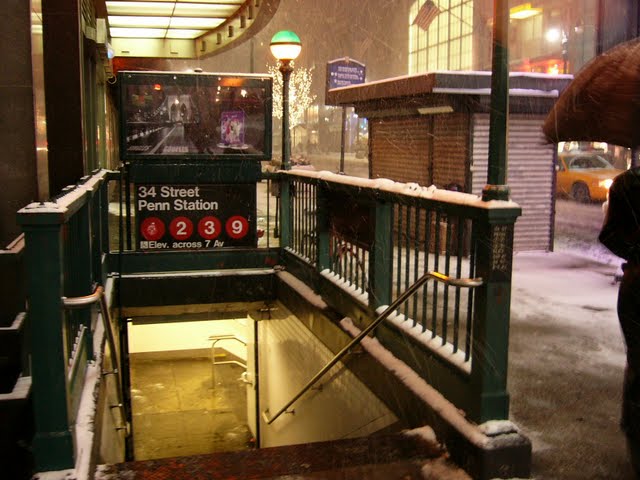
For more than a century, since he captured the spoken words “Mary had a little lamb” on a sheet of tinfoil, Thomas Edison has been considered the father of recorded sound. But researchers say they have unearthed a recording of the human voice, made by a little-known Frenchman, that predates Edison’s invention of the phonograph by nearly two decades.
The audio historian David Giovannoni with a recently discovered phonautogram that is among the earliest sound recordings.
Audio: 1860 recording:
The Phonautograph Recording from 1860 of 'Au Clair de la Lune' (mp3)
1931:
An Audio Excerpt from a 1931 Recording of the Same Song (mp3)
The 19th-century phonautograph, which captured sounds visually but did not play them back, has yielded a discovery with help from modern technology.
The 10-second recording of a singer crooning the folk song “Au Clair de la Lune” was discovered earlier this month in an archive in Paris by a group of American audio historians. It was made, the researchers say, on April 9, 1860, on a phonautograph, a machine designed to record sounds visually, not to play them back. But the phonautograph recording, or phonautogram, was made playable — converted from squiggles on paper to sound — by scientists at the Lawrence Berkeley National Laboratory in Berkeley, Calif.
“This is a historic find, the earliest known recording of sound,” said Samuel Brylawski, the former head of the recorded-sound division of the Library of Congress, who is not affiliated with the research group but who was familiar with its findings. The audio excavation could give a new primacy to the phonautograph, once considered a curio, and its inventor, Édouard-Léon Scott de Martinville, a Parisian typesetter and tinkerer who went to his grave convinced that credit for his breakthroughs had been improperly bestowed on Edison.
Scott’s device had a barrel-shaped horn attached to a stylus, which etched sound waves onto sheets of paper blackened by smoke from an oil lamp. The recordings were not intended for listening; the idea of audio playback had not been conceived. Rather, Scott sought to create a paper record of human speech that could later be deciphered.
But the Lawrence Berkeley scientists used optical imaging and a “virtual stylus” on high-resolution scans of the phonautogram, deploying modern technology to extract sound from patterns inscribed on the soot-blackened paper almost a century and a half ago. The scientists belong to an informal collaborative called First Sounds that also includes audio historians and sound engineers.
David Giovannoni, an American audio historian who led the research effort, will present the findings and play the recording in public on Friday at the annual conference of the Association for Recorded Sound Collections at Stanford University in Palo Alto, Calif.
Scott’s 1860 phonautogram was made 17 years before Edison received a patent for the phonograph and 28 years before an Edison associate captured a snippet of a Handel oratorio on a wax cylinder, a recording that until now was widely regarded by experts as the oldest that could be played back.
Mr. Giovannoni’s presentation on Friday will showcase additional Scott phonautograms discovered in Paris, including recordings made in 1853 and 1854. Those first experiments included attempts to capture the sounds of a human voice and a guitar, but Scott’s machine was at that time imperfectly calibrated.
“We got the early phonautograms to squawk, that’s about it,” Mr. Giovannoni said.
But the April 1860 phonautogram is more than a squawk. On a digital copy of the recording provided to The New York Times, the anonymous vocalist, probably female, can be heard against a hissing, crackling background din. The voice, muffled but audible, sings, “Au clair de la lune, Pierrot répondit” in a lilting 11-note melody — a ghostly tune, drifting out of the sonic murk.
The hunt for this audio holy grail was begun in the fall by Mr. Giovannoni and three associates: Patrick Feaster, an expert in the history of the phonograph who teaches at Indiana University, and Richard Martin and Meagan Hennessey, owners of Archeophone Records, a label specializing in early sound recordings. They had collaborated on the Archeophone album “Actionable Offenses,” a collection of obscene 19th-century records that received two Grammy nominations. When Mr. Giovannoni raised the possibility of compiling an anthology of the world’s oldest recorded sounds, Mr. Feaster suggested they go digging for Scott’s phonautograms.
Historians have long been aware of Scott’s work. But the American researchers believe they are the first to make a concerted search for Scott’s phonautograms or attempt to play them back.
In December Mr. Giovannoni and a research assistant traveled to a patent office in Paris, the Institut National de la Propriété Industrielle. There he found recordings from 1857 and 1859 that were included by Scott in his phonautograph patent application. Mr. Giovannoni said that he worked with the archive staff there to make high-resolution, preservation-grade digital scans of these recordings.










No comments:
Post a Comment